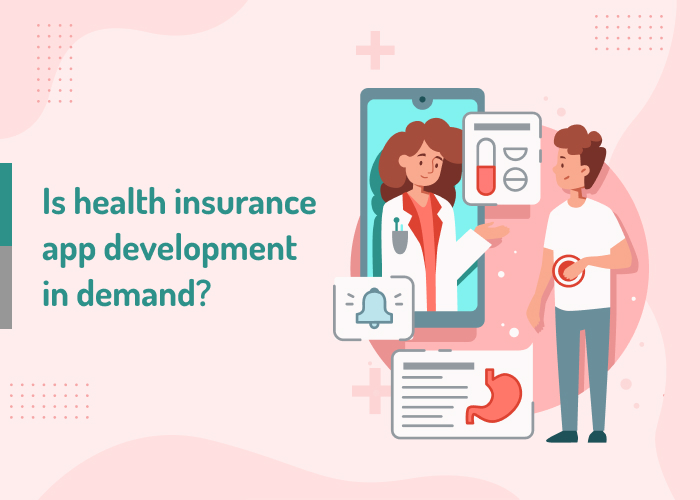Is health insurance app development in demand?

There is a growing need for mobile health insurance applications due to several factors, including the changing nature of healthcare and the increasing demands of customers. Imagine how individuals would wait for a health insurance company that takes days or months to answer their questions. Furthermore, it takes too much time to provide them with the amount of their claim when they can’t afford to wait for their physicians in today’s hectic world. It’s no surprise that prospective customers would go to the next solution that meets their demands more quickly and easily. You obviously don’t want it to occur to you.
Therefore, in order to keep your audience from having to deal with such upsetting circumstances, insurance companies need to provide them with a more sophisticated and practical solution that can easily meet their needs. This may be achieved through the optimization of your company process and the reduction of user wait times through health insurance app development.
What are the benefits of a health insurance app?
Health insurance app development has become more crucial than ever, providing several advantages to the general public as individuals grow more conscious of leading healthy lifestyles and purchasing medical insurance. The following are a few of the most amazing advantages of health insurance apps:
Convenience
Users may easily access vital healthcare and insurance information with the help of mobile health insurance applications. With this degree of accessibility, consumers may locate in-network providers, compare insurance plans, rapidly assess their coverage, and access their insurance information from any location at any time.
Real-time data
Real-time updates on policy modifications, claim statuses, and other insurance-related information are available through mobile applications. Users may keep updated about their coverage and make educated judgments about their healthcare alternatives by having simple access to such information.
Effective communication
These applications offer a productive means of communication between users, healthcare institutions, and insurance companies. The app eliminates the need for phone calls and paper documents by making it simple for users to communicate and receive messages, claims, and documentation.
Data Storage
Users of health insurance apps get access to a single, synchronized data storage system that can be easily connected with third-party platforms. Additionally, data security is a top priority for mobile applications, guaranteeing that users’ private health data is safely saved on the cloud, increasing their sense of security and comfort while disclosing personal information to anybody they want, and preventing accidents.
Revenue Maximization
The ability to automate procedures and lessen the need for paper documentation is one of the most significant advantages of developing health insurance apps. This lowers administrative expenses and improves customer service. Improved customer service grows your user base and accelerates your profit-growth process.
Less Paperwork
Users of health insurance applications don’t have to worry about printing claim records and other necessary paperwork. Users can securely save and access all the necessary information anywhere, at any time, thanks to the health and insurance applications’ easy accessibility.
How long does it take to create a health insurance app?
The time required to develop a health insurance app can vary significantly based on several factors. The complexity of the app, the features it includes, the platform(s) it targets (iOS, Android, web), and the development approach are all critical considerations. For a basic app, here is the breakdown:
- Planning and Research (2-4 weeks): Defining the app’s goals, features, and target audience. Determining the technical requirements.
- Design (4-8 weeks): Creating wireframes and prototypes for user interface (UI) and user experience (UX) design. Iterative design reviews and adjustments based on feedback. Finalizing the app’s visual and interactive elements.
- Development (12-24 weeks): Front-end development, back-end development. Integrating external services such as payment gateways, notification systems, and data analytics.
- Testing (4-8 weeks): Quality assurance testing to identify and fix bugs. User acceptance testing to ensure the app meets user expectations.
- Deployment (1-2 weeks): Preparing the app for release, including app store submissions and approvals. Configuring servers and databases for production.
- Post-Launch Support and Updates (Ongoing): Addressing user feedback and bug reports. Implementing new features or improvements based on user needs.
Conclusion
By empowering individuals with the ability to manage their health insurance seamlessly, health insurance apps bridge the gap between traditional healthcare and modern technology. The advantages extend far beyond mere convenience, offering a paradigm shift in how we approach healthcare. From improved accessibility and real-time information access to personalized health insights and streamlined administrative workflows, these apps stand as beacons of innovation in the ever-evolving healthcare landscape.
FAQs
Are health insurance applications secure?
Can I access my policy details on multiple devices?
How do health insurance applications enhance accessibility?
Do these apps offer real-time updates on claims processing?
Can I purchase a new health insurance policy through an app?
Ravi Bhojani is the Chief Marketing Officer (CMO) at Alian Software, where he spearheads the company’s marketing strategies and drives its brand presence in the competitive IT services landscape. With over a decade of experience in the technology and marketing sectors, Ravi has consistently demonstrated his ability to blend innovative marketing techniques with deep industry knowledge to deliver outstanding results.